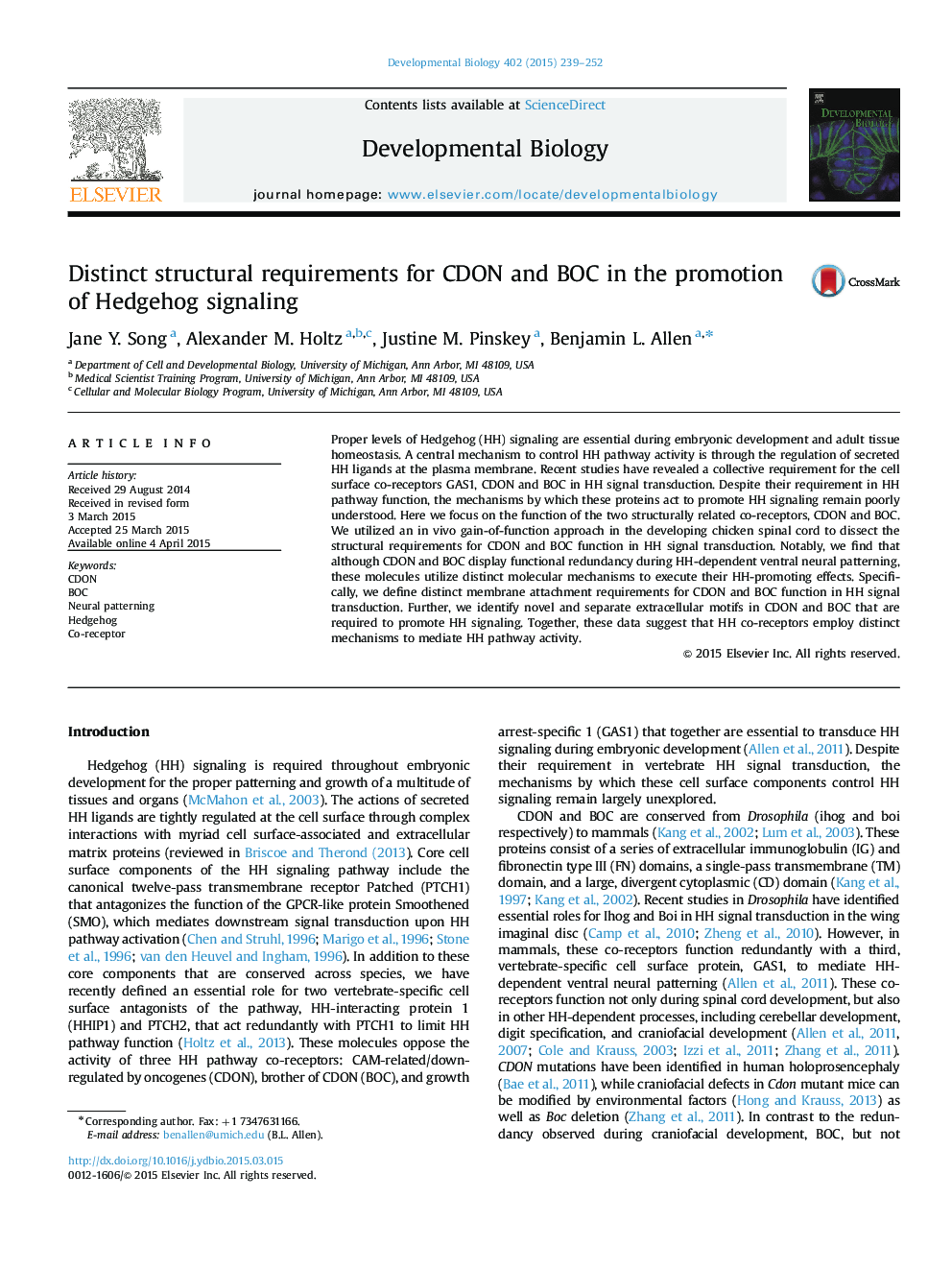| Article ID | Journal | Published Year | Pages | File Type |
|---|---|---|---|---|
| 10931347 | Developmental Biology | 2015 | 14 Pages |
Abstract
Proper levels of Hedgehog (HH) signaling are essential during embryonic development and adult tissue homeostasis. A central mechanism to control HH pathway activity is through the regulation of secreted HH ligands at the plasma membrane. Recent studies have revealed a collective requirement for the cell surface co-receptors GAS1, CDON and BOC in HH signal transduction. Despite their requirement in HH pathway function, the mechanisms by which these proteins act to promote HH signaling remain poorly understood. Here we focus on the function of the two structurally related co-receptors, CDON and BOC. We utilized an in vivo gain-of-function approach in the developing chicken spinal cord to dissect the structural requirements for CDON and BOC function in HH signal transduction. Notably, we find that although CDON and BOC display functional redundancy during HH-dependent ventral neural patterning, these molecules utilize distinct molecular mechanisms to execute their HH-promoting effects. Specifically, we define distinct membrane attachment requirements for CDON and BOC function in HH signal transduction. Further, we identify novel and separate extracellular motifs in CDON and BOC that are required to promote HH signaling. Together, these data suggest that HH co-receptors employ distinct mechanisms to mediate HH pathway activity.
Related Topics
Life Sciences
Biochemistry, Genetics and Molecular Biology
Cell Biology
Authors
Jane Y. Song, Alexander M. Holtz, Justine M. Pinskey, Benjamin L. Allen,
